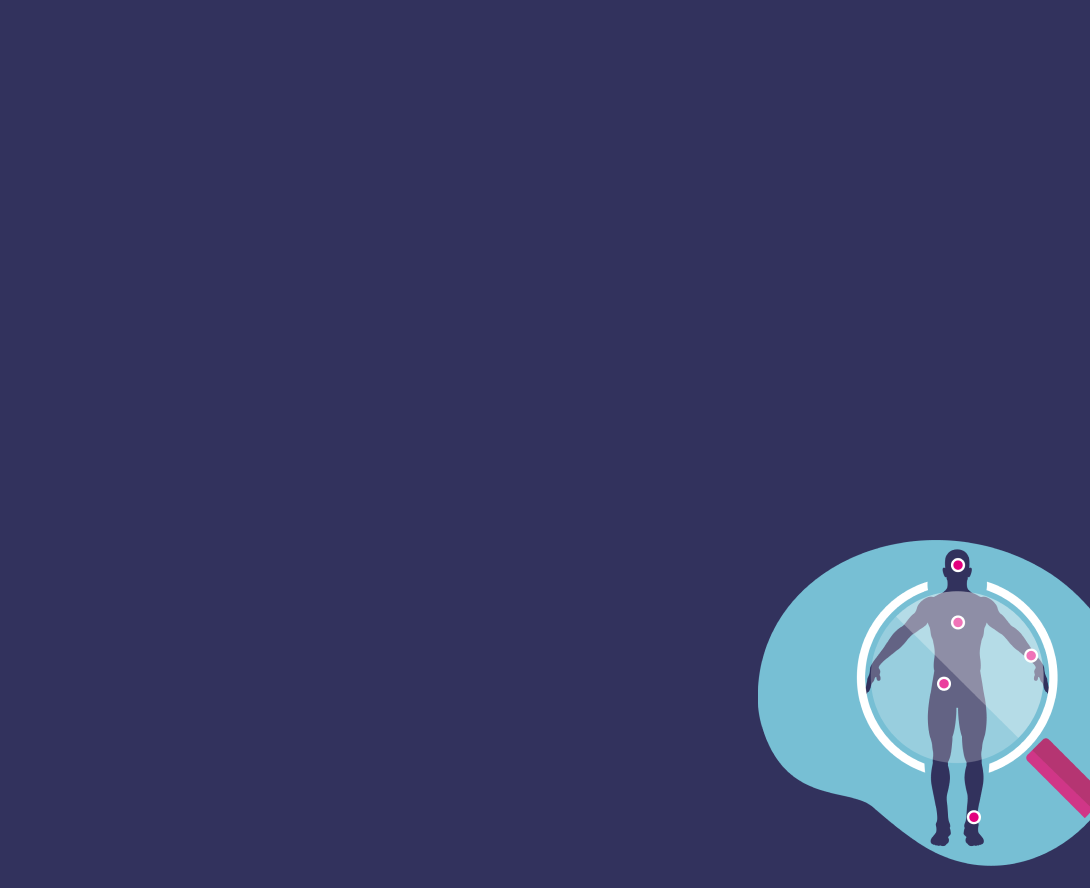Costochondritis and Tietze syndrome
Peer reviewed by Dr Doug McKechnie, MRCGPLast updated by Dr Philippa Vincent, MRCGPLast updated 22 Jan 2025
Meets Patient’s editorial guidelines
- DownloadDownload
- Share
- Language
- Discussion
Medical Professionals
Professional Reference articles are designed for health professionals to use. They are written by UK doctors and based on research evidence, UK and European Guidelines. You may find the Costochondritis article more useful, or one of our other health articles.
In this article:
Continue reading below
What is costochondritis?
Costochondritis describes tenderness of the costochondral junctions of ribs or chondrosternal joints of the anterior chest wall.
It is sometimes called Tietze syndrome which is not, in fact, synonymous with costochondritis as it is distinguished from it by the presence of swelling over the affected joints. Tietze syndrome is more localised, whereas costochondritis tends to be more diffuse.
Both conditions may be considered to be subtypes of chest wall pain/syndrome. All describe musculoskeletal causes of chest pain.
The underlying pathology in both conditions is thought to be localised inflammation. The cause of Tietze syndrome is unknown; however, preceding upper respiratory infections and excessive coughing have been described in some patients.
How common is costochondritis and Tietze syndrome? (Epidemiology)
Chest pain accounts for 1-2% of consultations in primary care.1
In primary care, costochondritis has been found to account for 13% of presentations with chest pain.23
Costochondritis is more common than Tietze syndrome.
Costochondritis is slightly more common in women than men and is most common between the ages of 40 and 50.3
Tietze syndrome can present at any age but is most common in those under the age of 40 years. Costochondritis is more common over the age of 40 years45
Tietze syndrome tends to affect males and female in equal proportions.5
Tietze syndrome can also present as a post-traumatic condition.6
Continue reading below
Symptoms of costochondritis (presentation)
Costochondritis typically causes bilateral parasternal chest pain which is made worse by stretching, coughing or deep inspiration.3
Costochondritis can affect any of the costochondral joints, but most commonly the second to the fifth ribs are affected. It is most common for more than one rib to be affected.
In costochondritis there is not usually any associated redness or swelling.
Tietze syndrome is usually unilateral and only one joint is affected; 70% of cases are the second or third rib.5
In Tietze syndrome there is commonly a history of recent illness with coughing, or recent strenuous exercise. It has also been associated with a recent asymptomatic covid infection.5
In both conditions, there is localised tenderness. In Tietze syndrome, there is a tender, fusiform swelling of the costal cartilage at the costochondral junction, demonstrable on palpation.7
Although the pain usually disappears spontaneously, the swelling of Tietze syndrome may persist long after the tenderness has disappeared.
Differential diagnosis
The challenge is to distinguish from other causes of chest pain - for example:
Acute coronary syndrome - radiation of pain to arm(s) or jaw, nausea, sweating, breathlessness.
Pericarditis - pleuritic pain, pericardial rub, ECG changes.
Heart failure - breathlessness, basal crepitations, elevated jugular venous pressure (JVP).
Pneumonia - cough, fever, chest signs.
Pulmonary embolism (PE) - pleuritic pain, breathlessness, tachypnoea, reduced oxygen saturation on pulse oximetry.
Thoracic aortic aneurysm dissection - sudden tearing pain, blood pressure difference between arms.
Rib fracture - history of trauma or coughing, tender to palpation, may be bruising.
Gastrointestinal causes of chest pain - for example, oesophagitis, reflux, peptic ulceration.
Non-Hodgkin lymphoma.8
Continue reading below
Diagnosing costochondritis (investigations)
Diagnosis can usually be made by careful history and examination.
Investigations may be required to rule out other possible causes of chest pain:1
ECG to exclude cardiovascular conditions; also where relevant troponin, coronary angiography, etc.
CXR to exclude other pathologies.
Ultrasound may have a role in assessment and diagnosis.
Magnetic resonance imaging (MRI) or PET may be useful for some patients.7
Tietze syndrome may show elevated CRP or ESR. 5
In patients with persistent symptoms of costochondritis and no response to analgesia, SAPHO (synovitis, acne, pustulosis, hyperostosis, and osteitis) should be considered as a possible diagnosis - this is a rare self-limiting disease of unknown aetiology lasting 4-5 years on average. 9
Management of costochondritis
There are no good studies looking at management of costochondritis, probably because of the self-limiting nature of the condition. 3
Recommendations tend to be for conservative management and this is successful for the majority of patients where pain settles quickly.
Stretching exercises with a physiotherapist showed some benefit in a small reduction in pain amongst patients who had symptoms for a year. 3
Chiropractic treatment or physiotherapy may be beneficial by improving mobility in posterior ribs.1011
There have been case studies reporting good success from physiotherapy in patients who have had persistent costochondritis symptoms.12
NSAIDs and other simple painkillers are often used but there are no studies confirming benefit. 3
Whilst there are no controlled trials looking at acupuncture, there has been a very small case series suggesting some benefit. 13
Tietze syndrome tends to be a self-limiting condition which resolves in weeks. Simple analgesia (NSAIDs or paracetamol) is often recommended if needed. 5
Local injection of long-acting corticosteroids have been shown to be of benefit in Tietze syndrome (but not costochondritis) if conservative measures had not helped for 3 months. 35
Warm pads to the area are also sometimes suggested in Tietze syndrome. 5
Prognosis
A large study of patients with costochondritis showed that 91% had resolution of their symptoms within 3 weeks of conservative management (rest and analgesia). 3
The recurrence rate at 2 years was 4%. 3
Tietze syndrome: the pain usually subsides within a few weeks (most people reporting full resolution within 1-2 weeks), with some residual swelling persisting for longer periods of time.5
However, the course of the disease varies from spontaneous remission to persistent symptoms which have been reported to last a year. Recurrences are possible. 5
Further reading and references
- Lanham DA, Taylor AN, Chessell SJ, et al; Non-cardiac chest pain: a clinical assessment tool. Br J Hosp Med (Lond). 2015 May;76(5):296-300. doi: 10.12968/hmed.2015.76.5.296.
- Chest pain; NICE CKS, August 2022 (UK access only)
- McConaghy JR, Oza RS; Outpatient diagnosis of acute chest pain in adults. Am Fam Physician. 2013 Feb 1;87(3):177-82.
- Costochondritis: Rapid Evidence Review; T Mott et al
- Rokicki W, Rokicki M, Rydel M; What do we know about Tietze's syndrome? Kardiochir Torakochirurgia Pol. 2018 Sep;15(3):180-182. doi: 10.5114/kitp.2018.78443. Epub 2018 Sep 24.
- Rosenberg M, Sina RE, Conermann T; Tietze Syndrome.
- Post-traumatic Tietze syndrome as an occupational accident: A case report study; A Koubaa et al
- Mettola G, Perricone C; Tietze Syndrome. Mediterr J Rheumatol. 2020 Apr 24;31(2):224. doi: 10.31138/mjr.31.2.224. eCollection 2020 Jun.
- Cipolletta E, Di Matteo A, Incorvaia A, et al; When chest pain is not "just" Tietze's syndrome: a case of non-Hodgkin's lymphoma. Clin Exp Rheumatol. 2019 Jul-Aug;37(4):714. Epub 2019 Apr 2.
- SAPHO—a diagnosis to consider in patients with refractory costochondritis; V Parra-Izquierdo et al
- Zaruba RA, Wilson E; Impairment based examination and treatment of costochondritis: a case series. Int J Sports Phys Ther. 2017 Jun;12(3):458-467.
- Grindstaff TL, Beazell JR, Saliba EN, et al; Treatment of a female collegiate rower with costochondritis: a case report. J Man Manip Ther. 2010 Jun;18(2):64-8. doi: 10.1179/106698110X12640740712653.
- Barranco-Trabi J, Mank V, Roberts J, et al; Atypical Costochondritis: Complete Resolution of Symptoms After Rib Manipulation and Soft Tissue Mobilization. Cureus. 2021 Apr 8;13(4):e14369. doi: 10.7759/cureus.14369.
- Acupuncture appears to be a rapidly effective treatment for costochondritis; R Alexander
Continue reading below
Article history
The information on this page is written and peer reviewed by qualified clinicians.
Next review due: 21 Jan 2028
22 Jan 2025 | Latest version

Ask, share, connect.
Browse discussions, ask questions, and share experiences across hundreds of health topics.

Feeling unwell?
Assess your symptoms online for free